CarEdge saved me over 4,500 dollars on a brand new Honda Pilot. I can't say thank you enough.
Price intelligence
Find a wide range of vehicle listings with market insights on new and used listings near you.
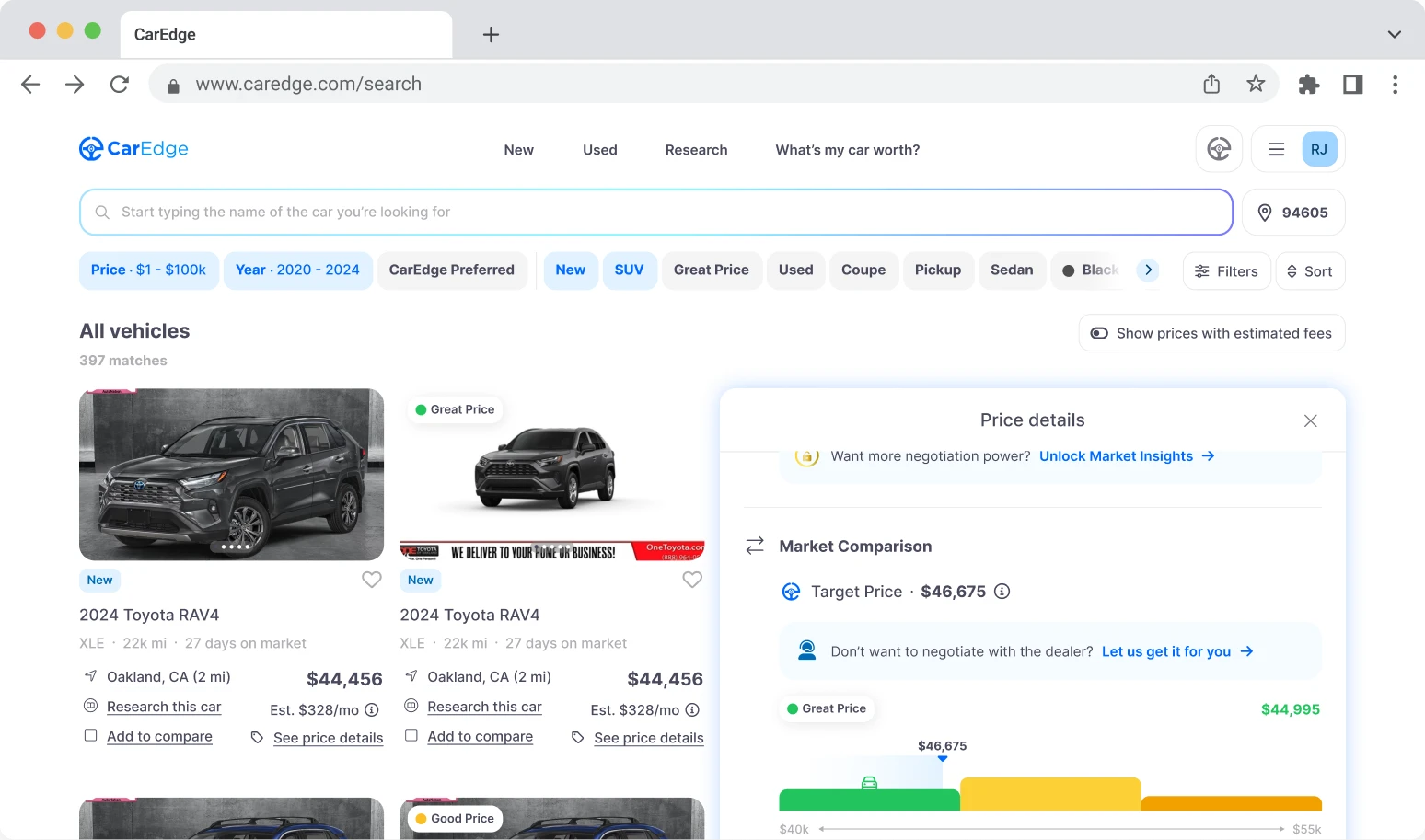

Help us personalize your CarEdge experience — it only takes a second.
Your answers help us personalize your CarEdge journey — we’ll follow up with tips and next steps that match your buying timeline.

As we approach Memorial Day weekend (May 25 – May 27), car shoppers have a golden opportunity to take advantage of significant discounts on SUVs and crossovers. Traditionally a hotbed for great car deals, 2024’s Memorial Day sales are shaping up to be especially big. This year, elevated levels of new car inventory and hefty floorplanning costs faced by dealers are creating the perfect storm for big bargains. It’s a buyer’s market! Here are the best Memorial Day SUV deals for May 2024.

Financing offer: 3.99% APR for 60 months
Cash offer: $1,250 cash savings
Lease offer: Lease the Palisade SEL from $379/month for 36 months with $3,999 due. See offer details.
The Hyundai Palisade is a favorite among families, offering a blend of comfort, space, and technology. Plus, it earns the ‘Top Safety Pick’ crash test rating from the IIHS. This Memorial Day, Hyundai is sweetening the deal with a competitive financing offer and a decent cash discount.
👉See Hyundai Palisade listings with the power of local market data

Financing offer: 6.9% APR for 72 months
Cash offer: $5,500 cash (conquest cash offer for owners of competitive brand vehicles)
Lease offer: Lease from $399/month for 36 months with $4,509 due. See offer details.
Jeep’s Grand Cherokee remains a top choice for those wanting rugged capability combined with luxury. This Memorial Day, Jeep is offering a conquest cash offer, making it an attractive option for owners of competitive brand vehicles. Despite the higher APR, the big cash discount can make this deal work. Check out the latest on Jeep reliability before you decide.
👉See Jeep listings with the power of local market data
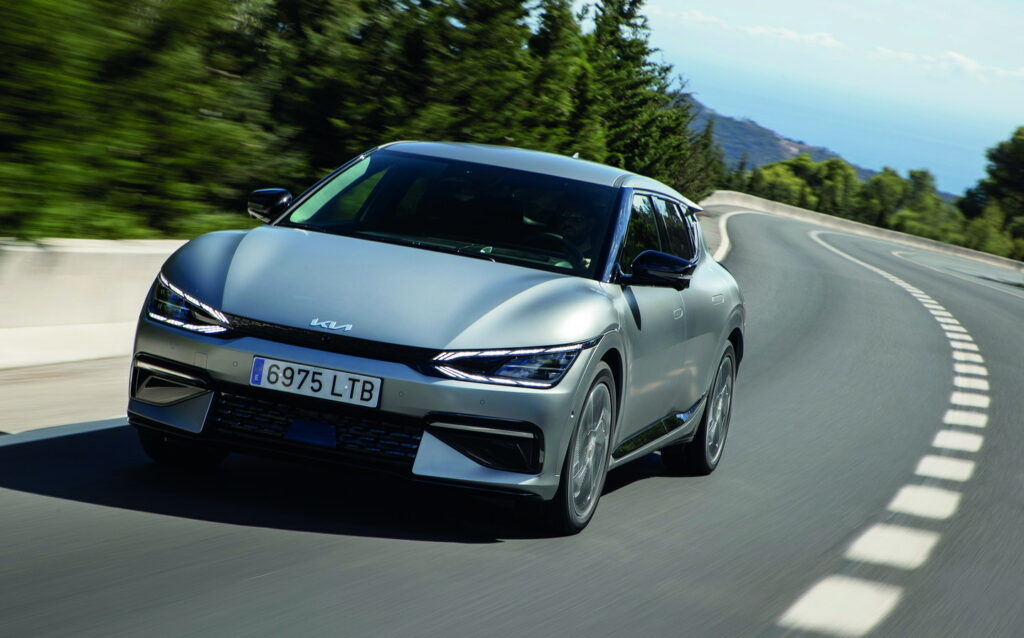
Financing offer: 0% APR for 60 months.
Cash offer: $9,000 cash discount
Lease offer: Lease for $209/month for 24 months with $3,870 due. See offer details.
The Kia EV6 is one of the best electric vehicles on the market, combining fast charging with sporty looks, despite the family-sized interior. This Memorial Day, Kia is offering one of the best deals with 0% APR financing and a massive $9,000 cash discount. If you’re considering going electric, the EV6 is a compelling option with these generous incentives.
Not sure you want an EV for the long-term, or simply want to avoid depreciation? This EV6 lease offer is as good as it gets. Need a 3-row electric SUV? The all-new Kia EV9 qualifies for similarly great Memorial Day deals.
👉See Kia EV6 listings with the power of local market data

Financing offer: 0% APR for 36 months for the 2024 Mazda CX-50, CX-30, CX-5, CX-90
Lease offer: Lease a 2024 Mazda CX-30 for 36 months for $199/month with $4,309 due at signing. See offer details.
Mazda’s lineup of SUVs is known for modern design and peppy driving dynamics. This Memorial Day, Mazda is offering 0% APR for 36 months across several models, including the CX-50, CX-30, CX-5, and CX-90. With attractive lease offers, particularly on the CX-30, Mazda provides excellent value for those seeking a fun-to-drive family SUV.
By the way, Mazda’s all-new CX-70 just arrived on dealer lots. Check them out here.
👉See Mazda listings with the power of local market data

Financing offer: 2.9% APR for 72 months for the 2024 Outback, Forester, and 2.9% APR for 48 months for the 2024 Ascent. See offer details.
Subaru is a brand synonymous with reliability and all-wheel drive capability. This Memorial Day, Subaru is offering competitive financing rates on its popular SUV models, including the Outback, Forester, and Ascent. With 2.9% APR available for extended terms, Subaru provides a solid deal for those seeking a durable and capable SUV.
👉See Subaru listings with the power of local market data

Financing offer: 0% APR for 60 months
Lease offer: Lease a 2024 Taos S for $229/month for 36 months with $3,999 due at signing. See offer details.
The Volkswagen Taos is a compact SUV that offers a premium feel at an affordable price. This Memorial Day, Volkswagen is offering 0% APR financing for 60 months, a rarity in today’s market. There’s also a stellar lease offer at just $229/month.
👉See VW Taos listings with the power of local market data
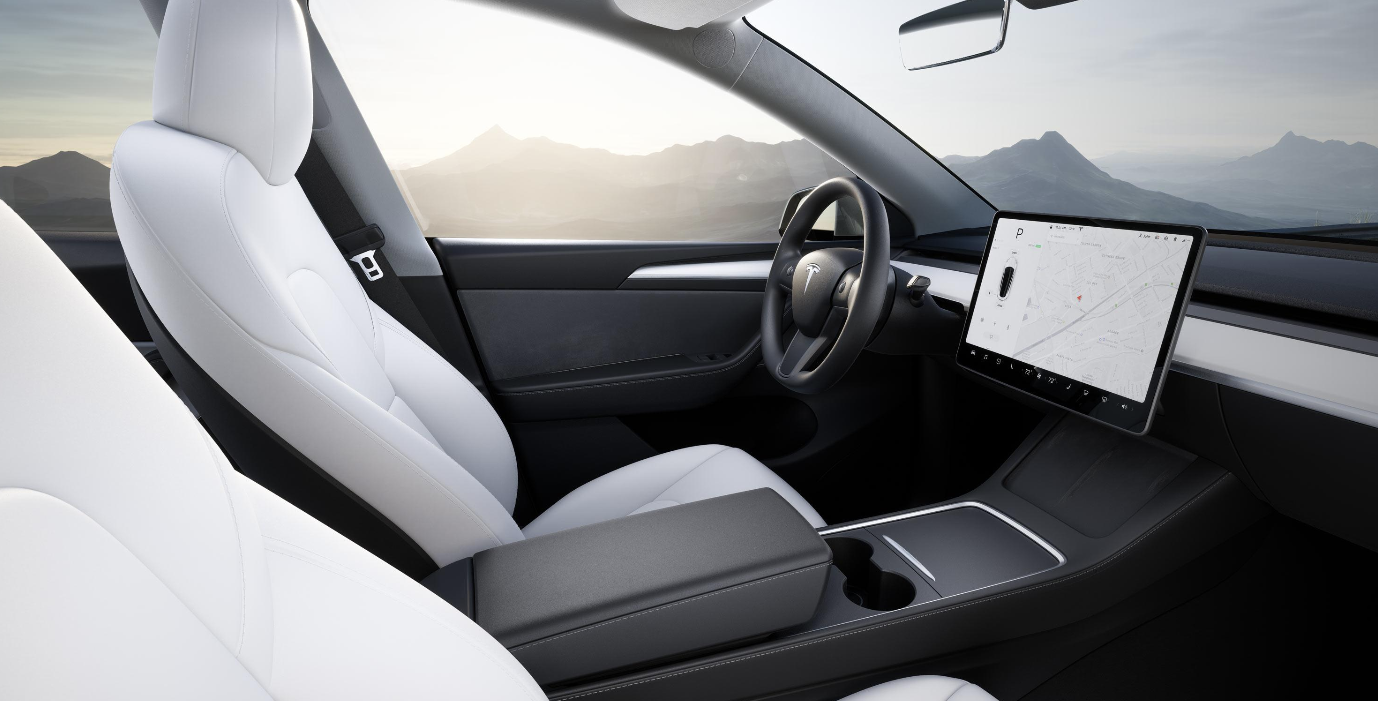
Financing offer: 0.99% APR for up to 72 months
Lease offer: Lease from $399/month with $2,999 due at signing. See offer details.
The Tesla Model Y is the best-selling EV in America, and one of the top-selling luxury vehicles, period. Rarely does the EV behemoth offer huge incentives like this. For Tesla’s Memorial Day sale, Tesla is offering an impressive 0.99% APR financing rate for up to 72 months, along with attractive lease terms. The Model Y’s long range, over-the-air updates, and extensive Supercharger network make it a top contender for EV fans and newbies alike.
👉See used Tesla listings with the power of local market data

Tired of negotiating, dishonest pricing, and all of the back-and-forth that comes with buying a new SUV? Let us do it for you! Learn more about CarEdge Concierge. It’s your ticket to saving more, and stressing less! Home delivery is available.
Prefer a DIY route with expert tools at your fingertips? CarEdge Pro is what you’re looking for! We’re simply here to help!

As the summer car buying season heats up, some are finding it to be a great time to buy, others not so much. Here, CarEdge Co-Founders Ray Shefska and Zach Shefska provide their summer 2024 car market update, offering the latest insights for the new and used car markets. Is it a good time to buy a car? We’ll answer that question for each kind of buyer. Let’s dive into the latest data and trends to help you make informed decisions, no matter what your preferred set of wheels may be.

Have you seen the deals lately? The summer of 2024 is becoming packed full of low-APR deals for new car buyers. With inventory remaining high for some (but not all) car brands, incentives are here to stay this summer. That’s great news for buyers. Check out the fastest and slowest-selling cars today.
We expect new car supply to continue rising slowly and steadily from where it stands today, with an industry average of 72 days of supply. That’s already slightly above normal, meaning that it’s officially a buyer’s market for most, but not all, new car brands.
Unfortunately, inventory is below average for more affordable vehicles, those under $40,000. Who’s to blame for that sad statistic? Unsurprisingly, the automakers. As CarEdge co-founder Ray Shefska notes, “the manufacturers continue to commit more of their production to higher margin vehicles, and those are the expensive models. This naturally creates a lasting shortage of affordable new cars.”
On the flip side, new car buyers interested in luxury models have better leverage due to very high lot inventory as we head into summer 2024. It’s not uncommon for our CarEdge Concierge to negotiate 10% off a luxury car on behalf of a customer.
Here are the brands with the most inventory and most negotiable prices for summer 2024::
Conversely, the brands with the least inventory and toughest prices to negotiate are:

The new car brands that we think offer fair value in 2024 are Subaru, Mazda, Kia, Nissan, and Chevrolet. These brands have attainable prices and well-built cars that represent, in our view, good value for the price point.
Subaru is known for straightforward pricing, which can be tough to find these days. Although Kia prices have risen over 40% over the past five years, the quality of their vehicles has increased greatly, and therefore we feel that Kia still represents a good value in 2024. This is especially true if you’re interested in a great deal on one of the fastest-charging EVs out there. Chevrolet’s popular Trax is one of the best budget SUVs out there today. That model alone earns the brand a spot on this short list.

The good news is that incentives are increasing. Month after month, we’re seeing OEMs offering more and better financing incentives near or at zero percent APR, and generous cash incentives. Lease offers are the best we’ve seen in three years. If you find yourself in need (not just want) of a new car, it’s a good time to buy.
👉 See this month’s best new car offers, selected by the CarEdge Team
New Car Market Rating for Summer 2024: It’s a good time to buy a new car.

You have greater buying power with your money today than you did just six months ago. Say NO to market adjustments. No one should be paying over MSRP for a new car today. The new car shortages are long behind us, no matter what the salesperson might say.

The used car market tells a different story. Used car prices are down about 5% in 2024 but remain high. The average used car listing price is $25,540, which is still $4,000 higher than just five years ago.
Used car inventory remains tighter than the new car market. There’s stagnation in the used market, and that’s not good with prices remaining this high. Prices have fallen fastest for used EVs and luxury cars.
One important factor single handedly makes it a poor time to buy for many drivers: interest rates. The average used car loan rate remains north of 13% APR. This means that even for a $30,000 used car financed for 60 months, you’ll be paying over $10,000 in interest over the life of your loan. Of course, you could try to pay off your loan early to avoid some of that. It’s smart to see how much your loan rate will cost you before you sign any papers. This free calculator is a great tool for that.
Used Car Market Rating for Summer 2024: It’s a difficult time to buy a used car.

The caveat is that if you’re in the used EV market, prices have fallen rapidly in 2024, and you can now get a surprisingly good deal on a 1-3 year old electric car, including Teslas.
👉 Stay on top of the used car market with our weekly updates, powered by Black Book
This summer 2024 car market update offers both good and bad news for shoppers. For new car buyers, the time is ripe to leverage high inventory levels and low APR financing deals. On the flip side, used car shoppers will need to navigate a more complex market with caution. Interest rates remain very high, and that’s keeping many would-be buyers away from used car lots.
As always, being informed and prepared is key to making the best decision for your situation. We want you to have the best tools for the job, so check out what we have for you below (100% free)…
Don’t step foot in the dealership without these FREE car buying cheat sheets! Know EXACTLY what to say, and what NOT to say.
Ready for a pro to do it all for you? Learn more about CarEdge Concierge, the most-trusted car buying service out there!

As we approach Memorial Day weekend, prepare for some of the best EV deals of the year. Historically a prime time for savings, 2024 Memorial Day EV sales are looking especially good. With the average new car loan rate near 10% APR, it’s crucial to take advantage of low APR offers featured in these deals. Elevated levels of new EV inventory is creating the perfect storm for big discounts. If you’re in the market for an electric vehicle, now could be your best chance at a bargain.
Here are the top Memorial Day EV deals available today.

Memorial Day Offer: Finance with 0.99% APR until May 31, 2024. Lease from $399/month with $2,999 due at signing.
Base Price: $44,990 – $51,490
Range: 279 – 320 miles
The Tesla Model Y is a standout in the EV market, offering a compelling combination of price, range, and technology. It’s the best-selling EV in America, and is now cheaper than ever before. Amazing financing offer aside, we’ve never seen a Model Y lease deal this attractive.
One of the key benefits of owning a Tesla is access to the expansive and reliable Tesla Supercharger network, which ensures convenient long-distance travel and faster charging times. This Memorial Day, Tesla’s offer of a 0.99% APR financing rate makes the Model Y an even smarter buy.
Build your Model Y at Tesla.com
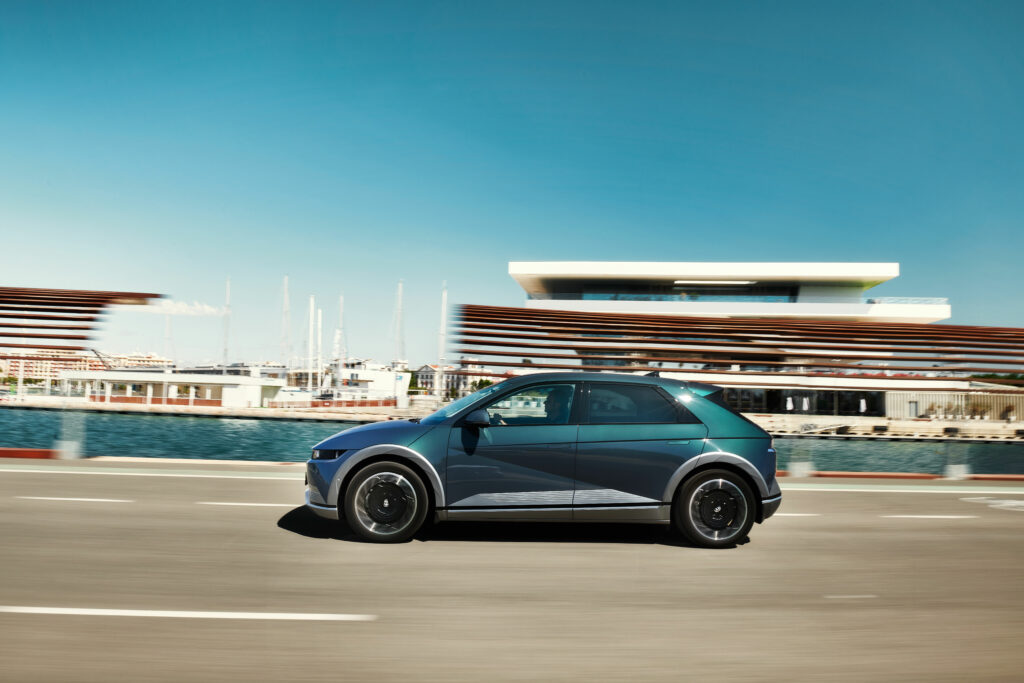
Memorial Day Offer: Finance with 0% APR (all trims) for 60 months + $7,500 customer cash until June 3, 2024. Lease the IONIQ 5 SE for $299/month for 24 months with $3,499 due.
Base Price: $41,400 – $53,500
Range: 220 – 303 miles
The Hyundai IONIQ 5 is one of the fastest-charging electric vehicles on the market today, capable of charging from 10% to 80% in just 18 minutes. The Memorial Day offer of 0% APR for 60 months translates to significant savings compared to the average new car loan rate of 9.95% APR.
Consider this: financing a $50,000 car at 0% APR versus 9.95% APR over five years can save you nearly $14,000 in interest.
Despite not qualifying for the federal tax credit for EVs, Hyundai’s $7,500 cash offer makes up for that, making the IONIQ 5 a smart and economical choice. Learn more about offer details.
Browse Hyundai IONIQ 5 listings with the power of local market data

Memorial Day Offer: 0% APR for 48 months + $9,000 cash. Lease for $419/month for 24 months with $4,999 due.
Base Price: $54,990 – $69,900
Range: 270 – 304 miles
The Kia EV9 has earned multiple awards for its innovative design and performance. With ultra-fast charging, a long range of up to 304 miles, and three rows of seats, it’s easy to see why.
This Memorial Day, Kia’s offer of 0% APR for 48 months plus a $9,000 cash incentive makes the EV9 an irresistible deal. The lack of a federal tax credit is more than offset by the substantial cash incentive. Deals like this don’t come around often. Learn more about this offer.
Browse Kia EV9 listings with the power of local market data

Memorial Day Offer: 0% APR for 60 months + $9,000 cash. Lease the EV6 RWD Wind for $249/month for 24 months with $3,999 due.
Base Price: $42,600 – $61,600
Range: 252 – 310 miles
The Kia EV6 stands out as the best new EV offer for Memorial Day 2024. With a combination of 0% interest for five years and a significant $9,000 cash incentive, it’s a deal that’s hard to beat.
Additionally, the EV6 can charge from 10% to 80% in as little as 18 minutes, making it a practical choice for those who value convenience and efficiency. If you’re looking to go electric without breaking the bank, and refuse to sacrifice charging speed and long range, this is the EV offer you’ve been waiting for. Learn more about this offer.
Browse Kia EV6 listings with the power of local market data
With low APR offers and massive cash discounts, Memorial Day is a fantastic time to buy a new EV. Charging infrastructure is growing, and even becoming more reliable. Whether you’re drawn to Tesla’s expansive and reliable Supercharger network or the unique offerings from Kia and Hyundai, there’s something for everyone this month.
Not ready to commit? Don’t fret. The best time of the year to buy a car isn’t Memorial Day, it’s year-end sales. Come December, expect great deals on 2024 models everywhere you look as 2025s arrive. Will financing offers be this great? It depends on what the Federal Reserve decides to do with interest rates between now and then. Time will tell!

Ready to outsmart the dealerships? Download your 100% free car buying cheat sheets today. From negotiating a deal to leasing a car the smart way, it’s all available for instant download. Get your cheat sheets today!

Despite an abundance of inventory and high interest rates, new car prices keep rising. Many automakers are increasing the starting prices of their vehicles at a pace that far exceeds inflation. Time and time again, we’ve seen automakers drop affordable base models, despite consumer appetite for cheaper options. Here are 10 models with the biggest MSRP increases in 2024, and how you can still negotiate a better deal.
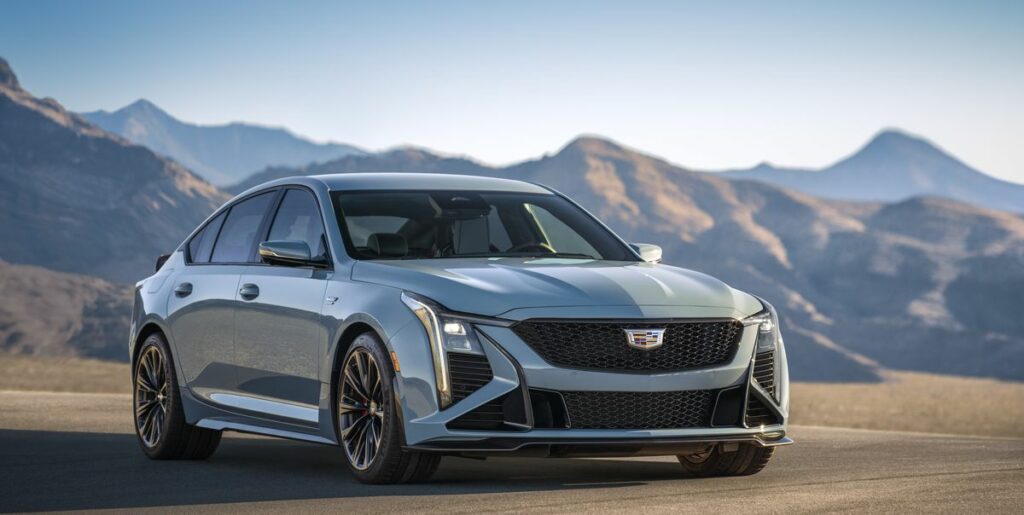
2025 Starting MSRP: $48,990 (+$9,200)
2024 Starting MSRP: $39,790
The Cadillac CT5’s price hike is one of the most significant this year. With nearly a $10,000 increase, luxury buyers might need to reconsider their budgets.
The good news for buyers is that Cadillac inventory remains above average, and that lends to negotiation leverage. There’s an 87-day supply of new CT5s on Cadillac dealer lots. There’s no shortage of this luxury sedan and smart buyers should use this to their advantage.
See CT5 listings with local market price data

2024 Starting MSRP: $35,345 (+$5,260)
2023 Starting MSRP: $30,085
You’ve likely seen the completely redesigned 2024 Hyundai Santa Fe on the road by now. Some say it looks stellar, while others call it a wannabe Land Rover. No matter what you think about this popular SUV, it’s a lot more expensive than it used to be. For the redesign, Hyundai added over $5,000 to the base MSRP of the Santa Fe.
See Santa Fe listings with local market price data
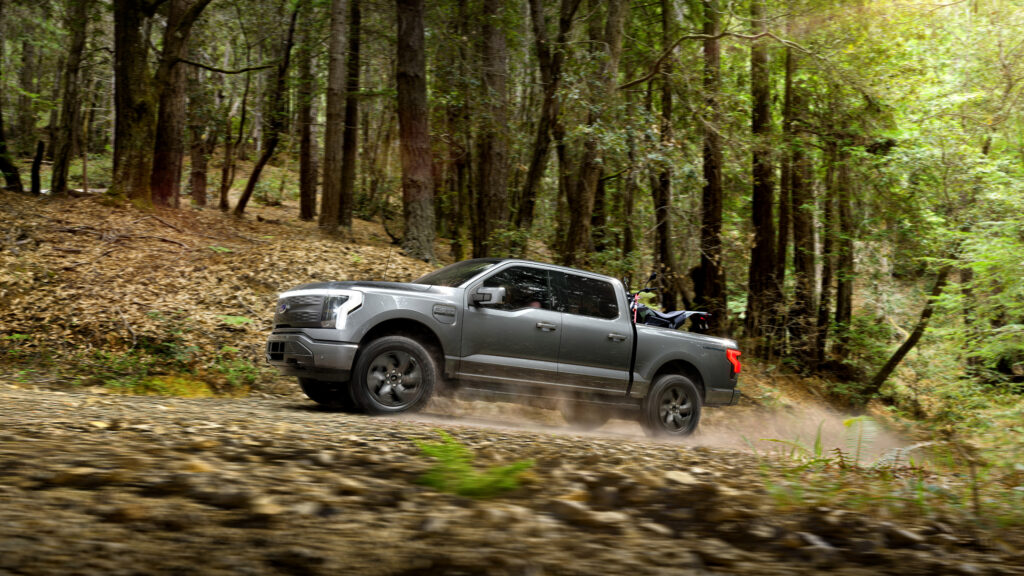
2024 Starting MSRP: $65,090 (+$8,100)
2023 Starting MSRP: $56,990
Ford’s popular F-150 Lightning XLT became a lot more expensive for the 2024 model year. We may be well into 2024, but Ford dealers are still clearing out 2023 inventory. It’s not exactly in high demand, with a current market-day supply of 114 days.
See F-150 Lightning listings with local market price data

2024 Starting MSRP: $47,665 (+$5,420)
2023 Starting MSRP: $42,245
Nissan has been trying to make headway into the American truck market for years now, to very limited success. The automaker sold just 19,189 copies of the Titan in the United States last year. Compare that to the Ford F-Series’ 750,000 units sold, and it becomes laughable that prices jumped 13% year-over-year.
And get this: There’s nearly a year of Nissan Titan supply on dealership lots today. We STRONGLY encourage negotiating Nissan Titan prices. It’s a buyer’s market!
See Titan listings with local market price data
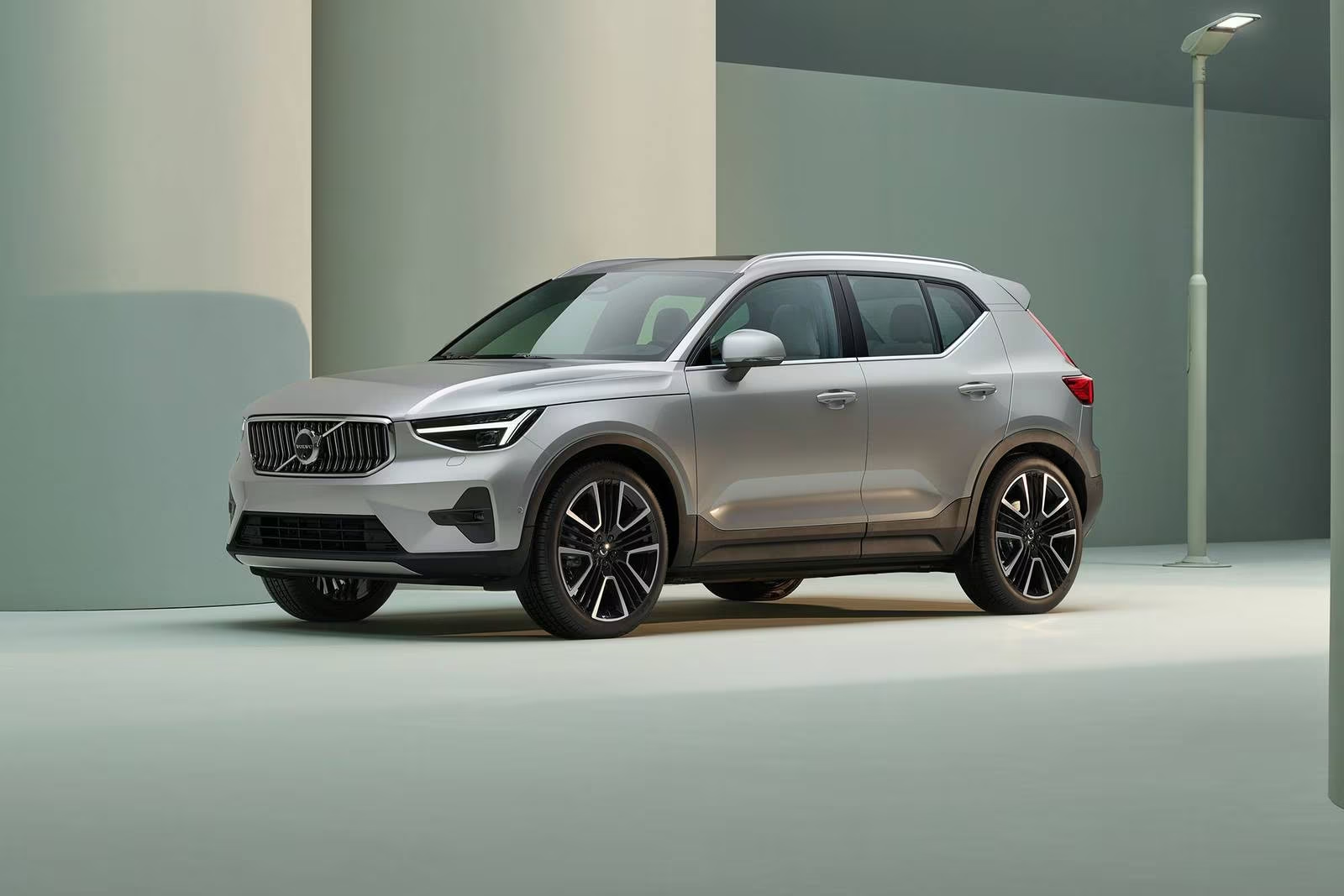
2024 Starting MSRP: $41,795 (+$4,350)
2023 Starting MSRP: $37,445
Volvo’s compact SUV, the XC40, sees a noticeable price increase this year. The XC40 is already a slow-seller, with nearly triple the average new car supply today. Volvo’s US market share has been flat for the past several years. Will higher prices change that? We doubt it.
See XC40 listings with local market price data
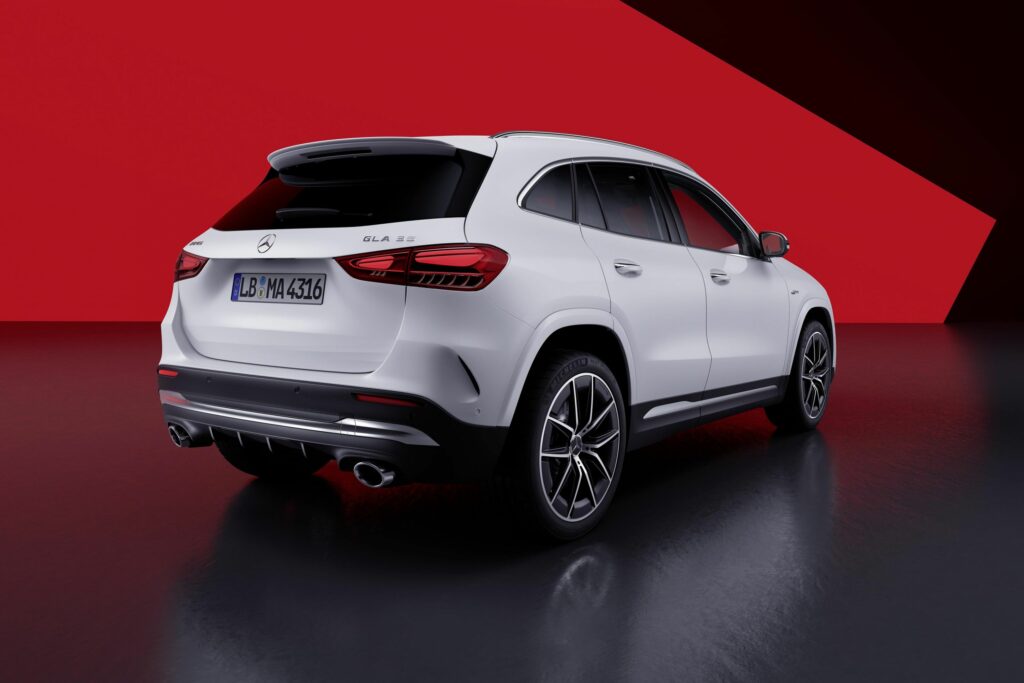
2024 Starting MSRP: $43,000 (+$4,350)
2023 Starting MSRP: $38,650
The entry-level luxury SUV, the Mercedes-Benz GLA, starts at a higher price in 2024. GLA sales have fallen slightly over the past year, so perhaps MB is rethinking the 11% price bump.
See GLA listings with local market price data

2024 Starting MSRP: $57,345 (+$4,750)
2023 Starting MSRP: $52,595
The Nissan Armada’s higher price in 2024 is not translating to more sales. There is a 222-day supply of the new Nissan Armada in May, meaning that inventory is nearly triple the industry average. Buyers just might be pushing back against higher prices, and perhaps giving the competition a closer look.
See Armada listings with local market price data
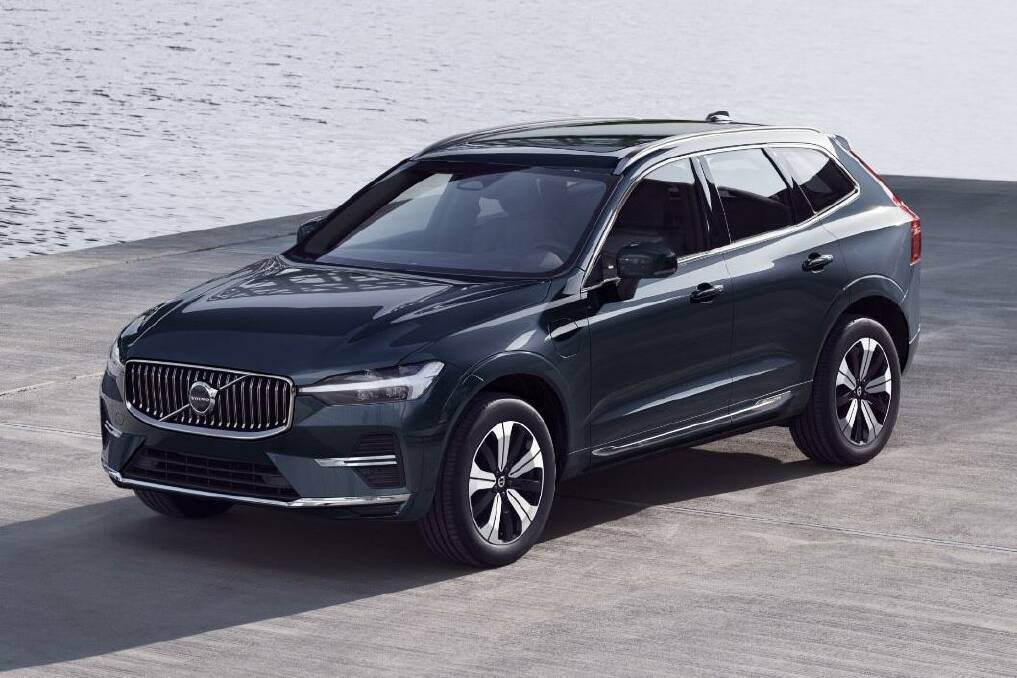
2024 Starting MSRP: $48,195 (+$3,650)
2023 Starting MSRP: $44,545
Volvo’s midsize SUV, the XC60, has also seen a price increase. Known for its comfort and advanced safety features, the XC60 continues to appeal to those looking for a premium SUV, despite the higher price tag. Today, the XC60 sells in higher numbers that the XC40, and that wasn’t always the case.
See XC60 listings with local market price data

2024 Starting MSRP: $38,765 (+$2,935)
2023 Starting MSRP: $35,830
It’s the best-selling truck in America, but it’s not the most affordable. The base Ford F-150 sees a modest price increase for 2024. However, the more popular Lariat has received a nearly $8,000 price hike for 2024, now starting at $67,190. Ford has finally cleared out most remaining 2023 inventory, so expect to see more 2024s on dealer lots. At least low-APR financing offers make the price hikes more manageable.
See F-150 listings with local market price data

2024 Starting MSRP: $63,800 (+$4,950)
2023 Starting MSRP: $58,850
The luxury SUV segment sees the Mercedes-Benz GLE with nearly a $5,000 price increase. Its blend of luxury, technology, and performance makes it a top choice among luxury buyers. However, GLE sales fell 8% in the US last year, so it’s a wonder that prices were hiked so much.
See GLE listings with local market price data
The trend of rising car prices shows no sign of slowing down in 2024. While these increases might seem daunting, empowered buyers can still find ways to negotiate better deals. Staying updated on price trends and being prepared to negotiate are key strategies in this evolving market. Luckily, CarEdge has 100% free resources to get you there!

Ready to outsmart the dealerships? Download your 100% free car buying cheat sheets today. From negotiating a deal to leasing a car the smart way, it’s all available for instant download. Get your cheat sheets today!
Looking for detailed, local car market data to give you the upperhand in negotiating? Learn more about CarEdge Pro. It’s expert data, unleashed!

Historically a prime time for deals, 2024 Memorial Day truck sales are shaping up to be particularly great. This year, elevated levels of new truck inventory and the hefty floorplanning costs faced by dealers are creating the perfect storm for big discounts. If you’re in the market for a new ride, and can’t afford to wait for year-end truck deals, now could be your best chance at a bargain. These are the best Memorial Day truck sales for May 2024, available today.

Starting MSRP: $38,345 (Average selling price: $60,309)
Current Market Day Supply: 103 days (holding steady)
Negotiability Score: High
2024 Sierra 1500: 1.9% APR + $3,250 cash allowance + NO payments for 90 days.
For remaining 2023 Sierra 1500s, get up to $8,000 in cash incentives.
GMC is offering one of the best truck deals for Memorial Day. With 1.9% APR, a generous cash offer, and no payments for three months, buyers can save several thousand dollars. If you can find a remaining 2023 model, you’re likely to rake in even bigger savings. This offer expires on 6/3/2024. Learn more at GMC.com.
See GMC Sierra 1500 listings with local market data

Starting MSRP: $37,445 (Average selling price: $55,537)
Current Market Day Supply: 109 days (holding steady)
Negotiability Score: High
2024 Silverado 1500: 1.9% APR + $5,750 cash offer w/ trade-in
Remaining 2023 Silverado 1500s: $7,250 customer cash
With 109 days of market supply, there’s an abundance of 2024 Silverado 1500s on Chevy dealer lots. At a time when the average new car loan rate is near 10%, this 1.9% APR offer is a great deal that will save you big time over the long run. This offer expires on 6/3/2024. Learn more at Chevrolet.com.
See Chevrolet Silverado 1500 listings with local market data

Starting MSRP: $48,645+ (Average selling price: $63,796)
Current Market Day Supply: 61 days (trending down)
Negotiability Score: Low
Toyota Tundra (2024s and remaining 2023 models): 3.99% APR for 60 months, or just 1.99% APR for 48 months.
With just 61 days of market supply, the Toyota Tundra is the least negotiable truck on sale today. However, Toyota being Toyota, they’re still offering a compelling financing deal for Memorial Day. While the Tundra’s 3.99% APR is not quite as great as the offers from GMC and Chevrolet, it’s still a great interest rate if you prefer this truck. This offer expires on 6/3/2024. Learn more at Toyota.com.
See Toyota Tundra listings with local market data

Includes the gas, hybrid, and electric F-150 variants.
Starting MSRP: $38,765 (Average selling price: $58,473)
Current Market Day Supply: 111 days (holding steady)
Negotiability Score: High (2023 models), Average (2024 models)
Remaining 2023 F-150 models: 1.9% APR for 72 months
New 2024 F-150 models: 3.9% APR for 60 months
The best-selling truck in America is building up on dealer lots as the cost of financing discourages many buyers. In fact, thousands of brand-new 2023 models remain unsold, so Ford’s Memorial Day sales are out to change that. These offers expire on 6/2/2024. Learn more at Ford.com.
See Ford F-150 listings with local market data

Starting MSRP: $40,350 (Average selling price: $56,474)
Current Market Day Supply: 305 days (rising)
Negotiability Score: Very High
5.9% APR financing for 84 months + up to $3,590 in cash savings
Nissan is aggressively pursuing a larger share of the U.S. truck market, though with mixed results. Their previous zero percent financing campaign has ended, but they’re now offering a variety of cash incentives that could save buyers up to $3,590.
For truck buyers who need a longer loan term, Nissan’s 84-month loan offer at 5.9% could save buyers a few thousand dollars in interest versus financing through a bank. However, we advise shorter loan terms when possible to save on interest. This offer ends on May 30, 2024. Learn more at NissanUSA.com.
See Nissan Titan listings with local market data

Tired of negotiating, dishonest pricing, and all of the back-and-forth that comes with buying a new truck? Let us do it for you! Learn more about CarEdge Concierge. It’s your ticket to saving more, and stressing less! Home delivery is available.
Prefer a DIY route with expert tools at your fingertips? CarEdge Pro is what you’re looking for! We’re simply here to help!